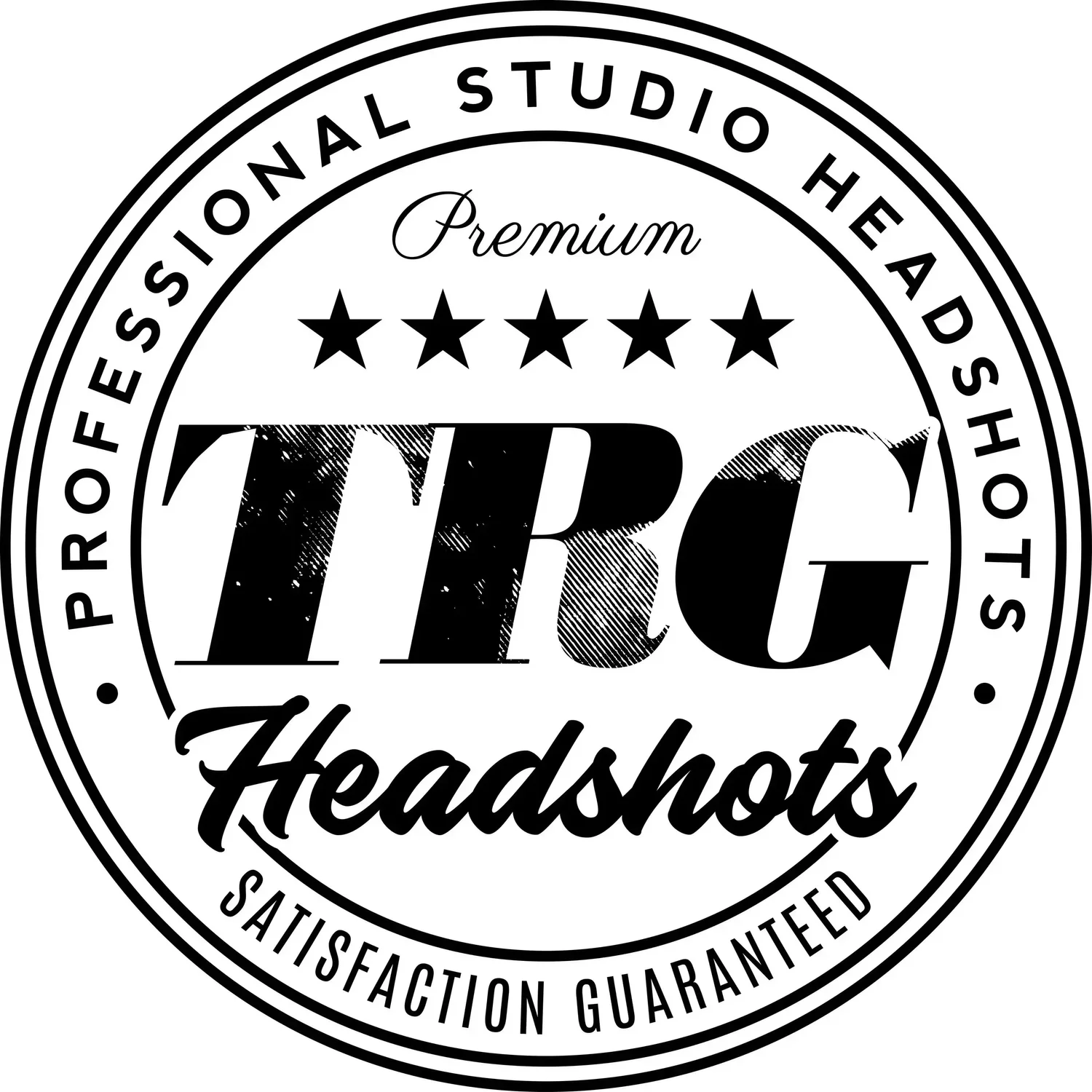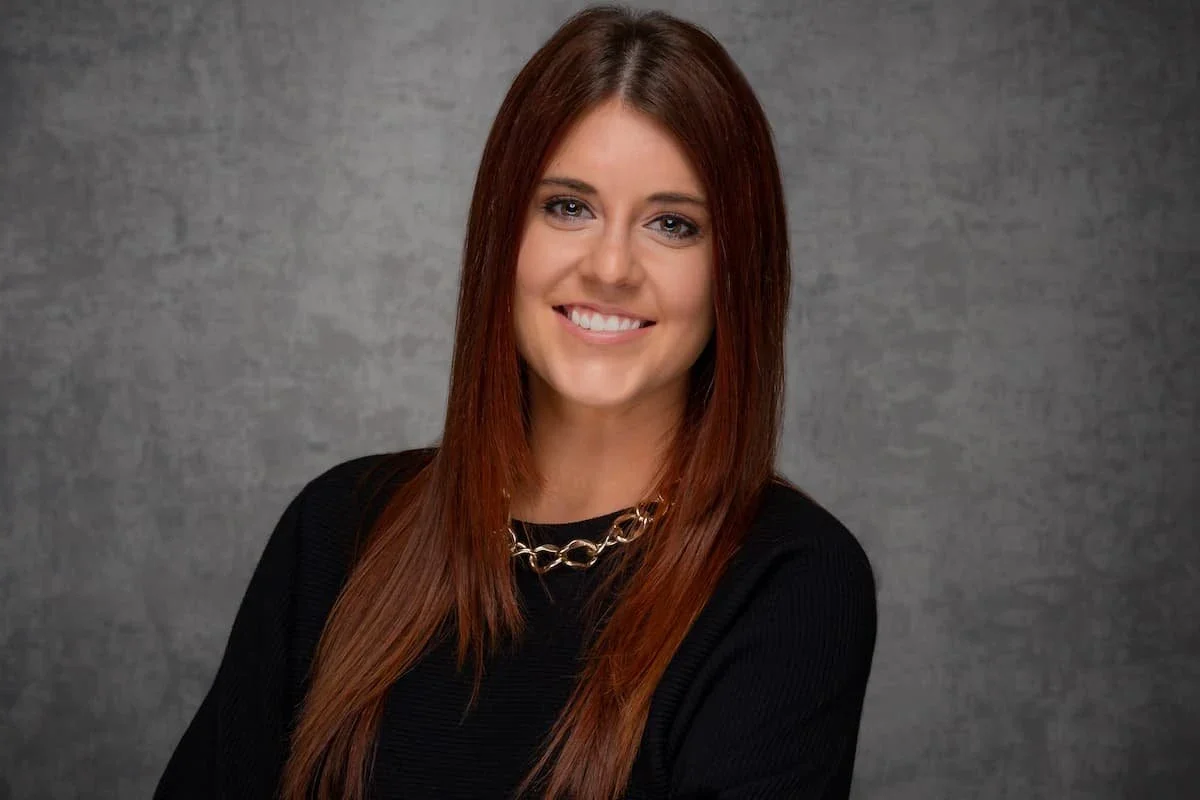Should Headshots Be Glossy or Matte? Tips for the Best Finish
Choosing the right finish for your headshots can seem like a small detail, but it actually plays a bigger role than you might think in how your image is perceived. This article explores the ins and outs of glossy versus matte finishes, helping you decide which is best for your professional photos. We'll look at how different finishes affect the look of your pictures, how they hold up over time, and what the industry generally prefers. So, should headshots be matte or glossy? Let's break it down.
What Do Glossy and Matte Finishes Mean in Headshot Photography
When you're getting your headshots done, one of the choices you'll eventually face is how you want them finished: glossy or matte. It might seem like a small detail, but it actually makes a difference in how your photo looks and feels. So, what's the deal with matte versus glossy photo finishes for headshots?
Glossy finishes give photos a shiny, reflective surface. This can make colors pop and give the image a sharper, more vibrant appearance. Think of it like looking at a brand new car – everything looks crisp and bright. However, that shine comes with a downside. Glossy prints are more prone to showing fingerprints, smudges, and scratches. If your headshot is handled a lot, these imperfections can become quite noticeable, potentially detracting from your professional image.
On the other hand, matte finishes have a non-reflective, softer look. They tend to absorb light rather than bounce it back, which can give the image a more subdued, artistic feel. Colors might appear a bit less saturated, and the overall impression can be softer, almost velvety. The big advantage here is durability and handling. Matte prints are much better at hiding fingerprints and minor scuffs, making them a more practical choice if your headshots will be passed around or handled frequently. Many industry professionals, particularly in film and theater, lean towards matte finishes for headshots because they are seen as more classic and less prone to distracting glare.
Here's a quick rundown of the main differences:
Glossy:
Pros: Vibrant colors, sharp details, high contrast.
Cons: Shows fingerprints, smudges, and scratches easily; can have glare.
Matte:
Pros: Hides fingerprints and smudges well, has less glare, and has a softer appearance.
Cons: Colors may appear less vibrant, and can look less sharp than glossy.
Ultimately, the decision of headshots should be glossy or matte, or headshots should be matte or glossy, often comes down to personal preference and the intended use of the photograph. Both have their place, but understanding these basic differences is the first step in making the right choice for your professional image.
How Paper Type Affects Appearance
The paper your headshot is printed on changes how it looks. It's not just about the finish, like glossy or matte, but the actual paper itself. Think about texture, how colors come through, and how sharp the details are.
Different papers have different feels. Some are smooth and slick, while others have a bit more tooth, like fine art paper. This texture can affect how light bounces off the print. A smoother paper might show more subtle shifts in tone, but it can also be more prone to showing every little fingerprint. A paper with a bit more texture can hide minor handling marks better, but it might slightly soften the image.
Color reproduction is another big one. Some papers are designed to make colors pop, giving you vibrant and saturated hues. Others are more neutral, aiming for a true-to-life representation without boosting the colors. This choice can influence the mood of your headshot. Do you want bright, energetic colors, or something more subdued and natural?
Detail is also affected. High-quality photographic paper, especially with a fine-grain structure, will hold sharp details well. This means things like the texture of your clothing, individual hairs, and subtle facial features will be clear. If the paper has a coarser texture or if it's a different printing method, like lithography, which uses dots, those fine details might get a bit lost or look less crisp.
The choice of paper isn't just a minor detail; it's a significant factor in how your headshot is perceived. It influences everything from the visual impact of the colors to the clarity of your features, and even how durable the print is in the long run.
Here’s a quick look at how paper types can differ:
Smooth Papers: Often used for glossy or satin finishes. They tend to show sharp details and vibrant colors, but can be prone to fingerprints and glare.
Textured Papers: Can have a slight tooth or a more pronounced texture. These often work well with matte finishes and can hide minor imperfections from handling.
Coated Papers: These have a coating that affects ink absorption and color vibrancy. The quality of the coating plays a big role in the final look.
Uncoated Papers: More absorbent, often used for a more natural or artistic look, but colors might appear less saturated, and details could be softer.
Light, Reflection & Glare
The way light interacts with your headshot is a big deal, and it depends on where and how people will be looking at it. Think about it: a photo that looks great on a brightly lit computer screen might get lost or look completely different when printed and viewed under office fluorescent lights. This is where the finish of the paper – glossy or matte – plays a significant role.
Glossy finishes tend to reflect more light. This can make colors pop and details appear sharp, but it also means you'll get more glare, especially under direct lighting. If your headshot is going to be displayed on a screen or viewed in a well-lit environment, that extra reflection might be distracting. It can obscure important details, like the subtle expression in your eyes, or create hot spots that hide parts of your face. On the flip side, that shine can sometimes give a modern, vibrant feel.
Matte finishes, on the other hand, absorb light rather than reflecting it. This results in a softer look with less glare. They are generally better for viewing in a variety of lighting conditions, as they minimize distracting reflections. This can be a real advantage if your headshot will be printed and handled frequently, or if it needs to be easily viewed in different settings without worrying about harsh light sources. The trade-off is that matte prints can sometimes appear less vibrant or detailed compared to glossy ones, depending on the paper quality.
The key is to consider the primary viewing environment. If your headshot will mostly live online or on a tablet, the way light bounces off it is less of a concern than if it will be printed and placed on a desk or pinned to a board.
Here’s a quick breakdown of how light affects each finish:
Glossy:
Pros: Vibrant colors, sharp details, modern look.
Cons: High glare, shows fingerprints easily, and can obscure details in bright light.
Matte:
Pros: Low glare, softer appearance, better for varied lighting, hides fingerprints better.
Cons: Can appear less vibrant, details might be slightly less sharp depending on the paper.
When you're choosing, ask your photographer about how the print will look under different lights. They might even have samples of both finishes you can compare side-by-side. It’s not just about the look; it’s about how that look holds up when people actually see it.
What Role Industry & Usage Play
The industry you're trying to break into shapes how your headshot should look and be presented. For actors, for instance, the traditional route has often been a printed 8x10 headshot, usually on matte paper. Casting directors and agents have historically relied on these physical copies to pin on boards or keep in their files. They need to be durable enough to handle some wear and tear, and the matte finish helps reduce glare when viewed under office lighting.
However, things are shifting. Many casting platforms and submission sites now require digital files. This means your headshot needs to look good on a screen, which can sometimes favor a slightly different approach to lighting and color. If you're submitting online, a high-resolution JPEG is usually the standard. It's important to check the specific requirements of each platform or agency you're submitting to, as they can vary.
Think about where your headshot will be seen. If it's for a personal website or online portfolio, you have more flexibility. A glossy finish might make colors pop more, which can be great for certain creative fields. But for acting, the industry standard leans towards matte. Some photographers might even offer both options, or suggest a specific finish based on your intended use.
Here's a quick breakdown:
Acting Industry: Primarily matte prints for physical submissions. Digital files are increasingly common for online applications. Check agency/casting director preferences.
Modeling Portfolios: Often a mix of glossy and matte, depending on the type of modeling and the desired aesthetic. Glossy can highlight fashion details, while matte offers a more subdued look.
Corporate/Business: Usually matte or silk finishes for a professional, understated appearance. Less emphasis on dramatic flair, more on approachability and competence.
Online Profiles (LinkedIn, etc.): Digital files are key. Ensure good resolution and appropriate cropping for screen viewing. Finish is less relevant here.
The key is to understand that a headshot isn't just a picture; it's a marketing tool. Its presentation needs to align with the expectations of the people who will be looking at it for professional reasons. What works for a theater actor might not be ideal for a commercial model or a business executive.
When you're getting your headshots done, have a conversation with your photographer about your career goals. They can guide you on the best finish and format to meet industry demands. It's not just about looking good; it's about presenting yourself in a way that gets you noticed for the right reasons.
Durability & Maintenance
When you're thinking about how your headshots will hold up over time, especially if they're going to be handled a lot, the finish really matters. Glossy prints, while they can make colors pop and give a sharp look, are also magnets for fingerprints and scratches. A single smudge can really detract from the professional appearance. Matte finishes, on the other hand, tend to hide these imperfections much better. They absorb light differently, which also means they can hide minor scuffs and wear more effectively.
Here’s a quick look at how the finishes compare:
| Feature | Glossy Finish | Matte Finish |
|---|---|---|
| Fingerprints | Highly visible | Less visible |
| Scratches | Easily noticeable | More resistant, less visible |
| Handling | Requires careful handling | More forgiving with handling |
| Light Reflection | High, can cause glare | Low, reduced glare |
| Overall Durability | More prone to showing wear | Generally, more durable for handling |
Think about where these photos will end up. If they're going to be passed around in casting offices or used in portfolios that get a lot of use, a matte finish might be the more practical choice. It means your photo will likely look cleaner for longer, even with regular handling. Glossy prints might be better suited for display purposes or when you know they'll be protected behind glass or handled minimally. It’s a trade-off between that initial visual punch and long-term resilience.
The choice between glossy and matte isn't just about looks; it's about how the print will perform in the real world and how much effort you want to put into keeping it pristine.
Aesthetic & Branding Considerations
The finish you choose for your headshots can really say something about you, even before someone reads your name. It's all about the vibe you're putting out there. Think about what you want people to feel when they see your picture. Do you want to come across as serious and sophisticated, or more approachable and friendly? The way light bounces off the paper plays a big part in this.
Glossy finishes tend to be bright and reflective. They can make colors pop and give a sharp, modern feel. This might be great if you're going for a high-energy, contemporary brand. It can make your eyes look really bright and can give a sense of dynamism. However, that shine can also pick up a lot of light, which might not be ideal if you're often looking at your headshots under bright office lights or on a screen with glare. It can sometimes feel a bit too slick, almost like a magazine cover, which might not be what you want for a more down-to-earth persona.
Matte finishes, on the other hand, absorb light more. They give a softer, more subdued look. This can be perfect for conveying warmth, approachability, or a more classic, artistic feel. If you want to come across as thoughtful, grounded, or perhaps a bit more serious without being stern, matte is often the way to go. It reduces glare, making it easier to see the details of your expression without distraction. It feels more tactile and less about flash, which can be effective for certain industries or personal brands.
Here's a quick look at how the finishes might align with different personal brands:
Glossy: Modern, dynamic, energetic, bold, high-impact.
Matte: Approachable, warm, classic, artistic, thoughtful, grounded.
Ultimately, the choice between glossy and matte is about aligning the visual presentation with your personal brand and the message you want to send. It’s not just about how the photo looks, but how it makes people feel about you.
Consider your industry, too. If you're in a creative field like acting or modeling, you might want a finish that highlights your versatility. For corporate roles, a more subdued, professional look might be better. Your headshot is a tool, and like any tool, it needs to be the right one for the job. Getting this right helps make sure your first impression is exactly what you intend it to be.
Cost, Print Options & Availability
When it comes to printing your headshots, the cost can really add up, and it’s something you definitely need to think about. You’ve already invested time and money into the photoshoot itself, so getting the prints right is important, but you don’t want to break the bank either.
There are a couple of main ways to get your headshots printed, and they come with different price tags. You can go with professional printing services that specialize in headshots, which usually means higher quality and a more polished look. These places often have specific paper types and finishes they recommend, like semi-gloss, which is generally preferred over high-gloss or pure matte for headshots. They'll also handle the standard 8"x 10" sizing and ensure your name is printed correctly.
Alternatively, some people consider printing them themselves. While this might seem cheaper upfront, you need to make sure you have a good quality inkjet printer and the right kind of photo paper. Using the wrong paper or finish can actually hurt your chances with casting directors, making it look like you're not taking your career seriously. So, if you go this route, do your homework on the equipment and materials.
Here’s a quick look at some common printing methods and their general cost implications:
Photographic Prints: Made using traditional photographic processes, these offer excellent detail and tonal range. They tend to be more expensive per print but are often considered the gold standard for quality.
Lithographic Prints: These are printed using ink and a screened negative. They are typically much cheaper, especially in larger quantities, but the image quality can be flatter and less sharp, sometimes showing visible dots under magnification. They might be acceptable for certain promotional uses or regional markets, but generally, photographic prints are preferred for primary submissions.
Digital Files: While not a print cost, remember that you'll likely receive digital files from your photographer. These are essential for online submissions and can be a cost-effective way to distribute your image widely. However, you'll still need physical prints for in-person auditions and networking.
The cost per print can vary significantly, often ranging from $1-$5 for professional photographic prints, while lithographs might be as low as $0.50-$1.50 per print, especially when ordered in bulk. It’s worth getting quotes from a few different places to compare. You can often get free quotes from various photo printing services to see what fits your budget.
When you're choosing where to print, look for services that offer a hard-copy proof before they run your entire order. This way, you can check the color, sharpness, and overall look to make sure you're happy before committing to a large batch of prints. It’s a small step that can save a lot of disappointment later on.
Making the Decision
So, you've got your amazing headshots back from the photographer. Now comes the part where you have to pick the right finish for printing and online use. It’s not just about what looks pretty; it’s about what works best for your career.
Think about where these photos will actually be seen. If you're mostly submitting online, the finish matters less because screens handle light differently. But for printed copies, especially for casting directors or portfolio books, the finish can make a big difference in how your image is perceived.
Here are a few things to consider when you're making the final call:
Your Industry Needs: For acting, casting directors often prefer matte finishes because they reduce glare and make it easier to see your expression clearly, especially under bright office lights. For other industries, like corporate or business, a slightly more polished look might be suitable, but glare is still something to watch out for.
The Photo Itself: Look at your specific headshot. Does it have a lot of subtle detail in the eyes or hair? A matte finish will preserve those fine points without distracting reflections. If the photo has a very clean, almost graphic feel, a glossy finish might add a bit of pop, but be careful it doesn't look too harsh.
Handling and Durability: Matte prints tend to be more forgiving with fingerprints and minor scuffs than glossy ones. If your headshots will be handled frequently, Matte might be the more practical choice. Glossy prints can show smudges more easily, which can make them look less professional over time.
It’s often a good idea to have a mix. You might get a few key shots printed in matte for general submissions and portfolios, and perhaps have one or two printed in glossy for specific promotional uses or if your photographer recommends it for a particular image. Don't be afraid to ask your photographer for their advice based on the specific shots you've chosen and the printing options they offer. They can often show you examples of both finishes side-by-side, which can really help in making up your mind.
Frequently Asked Questions
-
Glossy prints make pictures look sharper and colors brighter. However, they show fingerprints and scratches more easily. Matte prints can make images look softer and colors a bit duller, but they are better at hiding smudges and scratches, making them easier to handle.
-
While there are no strict rules, the film industry often shows a preference for matte-finish headshots. This is likely due to their durability and how they handle light, making them appear more professional for submissions.
-
Whether you need prints or digital files often depends on your agent. If you have representation, they can best advise you on what the industry requires. Many photographers now provide digital files, but prints are still important for certain submissions.
-
Retouching should be minimal. The goal is to look like yourself. Minor touch-ups to soften lines that appear harsh or remove temporary blemishes are acceptable. Avoid heavy retouching that changes your appearance significantly, as casting directors want to see the real you.
-
Casting directors look for headshots that clearly show your face, have a good expression, and look professional. Your eyes should be engaging, and the image should convey honesty and directness. The background should not be distracting, and your skin tones should appear natural.
-
Vertical headshots are generally preferred by most casting directors and are easier to use on online casting platforms. While horizontal shots were popular at one time, vertical orientation is now more practical for submissions and online profiles.



